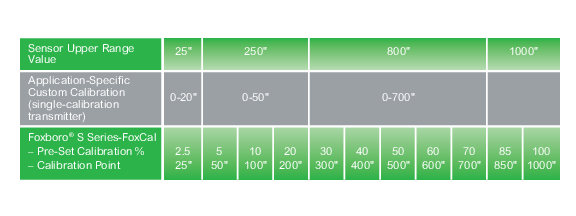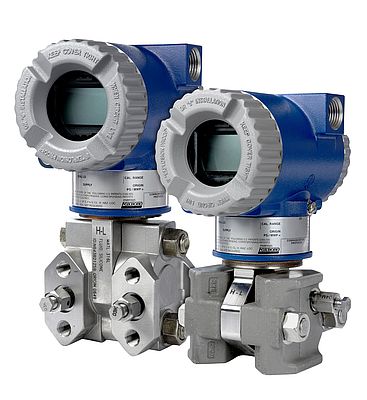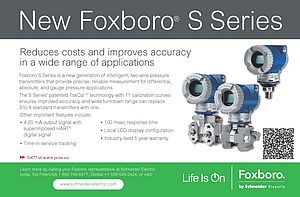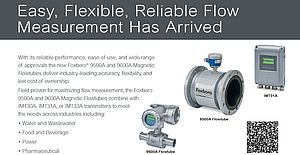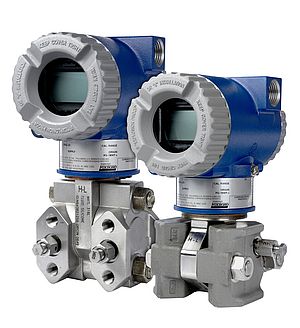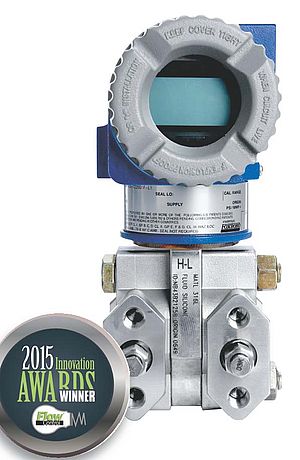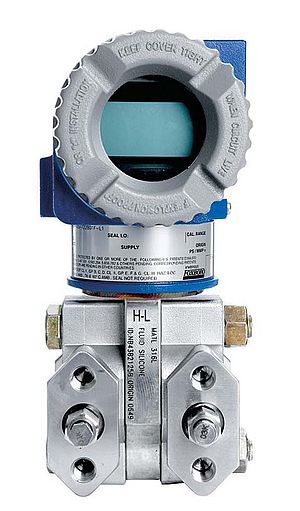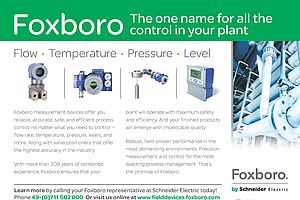When evaluating a pressure measurement application, instrument engineers must consider many essential criteria to ensure correct ordering and performance. Among the important initial selection factors to consider are process temperature, ambient temperature, wetted materials, fill fluid requirements, process connection type, and safety approval requirements. After identifying products that meet these essentials, engineers can then move to a more specific consideration of factors that will most directly affect the accuracy of measurement: the sensor range, the calibration point, and the degree of turndown.
To meet the needs of a new process control application, an engineer might decide that he needs a transmitter equipped with a 250" H2O differential sensor, custom calibrated for 0 to 100" H2O. To protect plant operations from interruption in the event of a transmitter failure, that engineer would also order several spares for inventory with the same sensor range and calibration. But for all that work and expense, things can still go wrong. What if the operating pressure for a particular application was somewhat higher than process designers expected - higher than the range the engineer used to specify and calibrate the new transmitters? In that case, either a factory recalibration or complete replacement of the new transmitters would be required.
Shouldn't there be an easier, more predictable, and less expensive way for instrument engineers to be sure that they are getting the right pressure transmitter for their applications?
Foxboro® thinks so and, through a patented technology, now offers a solution to the costly dilemma of getting the right sensor, calibration, and accuracy in pressure transmitters for varied requirements. The technology, called FoxCal™, was invented when a Foxboro engineer asked the question, "Why do we make customers order all of these specific calibrations? Why can't we provide a transmitter that offers multiple calibration curves?" The answer, FoxCal, incorporates 11 calibration curves into microprocessor - based firmware that is now available in the new Foxboro S Series pressure transmitter from Schneider Electric.
So just how does Foxboro's FoxCal multiple calibration technology work? During the manufacturing of Foxboro S Series pressure transmitters, each undergoes a process called characterization. A multitude of data points, collected at a wide range of pressure and temperature variations, are analyzed and converted into fifth-order polynomial look-up tables. These enable the transmitter to receive raw pressure inputs and using FoxCal, to generate extremely accurate outputs. At the same time, each transmitter is also undergoing calibration using pre-defined calibration points that represent very specific percentages of the upper range value of the sensor. The 11 pre-defined calibration points used in FoxCal occur at 2.5%, 5%, 10%, 20%, 30%, 40%, 50%, 60%, 70%, 85%, and 100% of URL, points that Foxboro engineers found corresponded to the custom calibrations that were ordered by typical customers.
Depending on the input pressure to the transmitter, the FoxCal micro-controller will automatically determine which of its 11 stored calibration curves should be used to provide the most accurate output. So if the storeroom has one Foxboro S Series transmitter equipped with a 1000" H2O sensor, it is like having 11 transmitters with calibration points at 25", 50", 100", 200", 300", 400", 500", 600", 700", 850", and 1,000". For each of the 11 calibration points, that transmitter will maintain 0.05% of reading (or span) in digital mode, or 0.06% of span in analog mode. All in one!
So what are the benefits to the customer of a pressure transmitter that contains multiple calibration curves? The first is an extremely high turndown capability, enabling the Foxboro S Series to be ranged down to very high turndowns without sacrificing reference accuracy. The user only has to set the 4-20 mA output scale and the transmitter will automatically select the appropriate calibration curve for the application. The second benefit is that spares inventories can be dramatically reduced, both in complexity and in cost. On average, one Foxboro S Series pressure transmitter is able to replace 2 to 3 sensor ranges that must be inventoried with single-calibration pressure transmitters.
In today's economic environment, everyone is looking for ways to cut costs and reduce inventories. While the FoxCal technology is awardwinning and carries a unique value proposition, comments made by the early adopters of FoxCal technology are even more telling. For example, a senior instrument control specialist at a steam generating station for a major power utility said, "When a new project goes online, the operating pressures can be much higher or lower than expected. If these pressures exceed the calibration range of the specified transmitter, accurate pressure measurement is impossible until the out of- range transmitter is replaced."
That's why the instrument control specialist and his colleagues were so intrigued by news of the new Foxboro S Series pressure transmitters, which are available in three models: IGP10S, IDP10S, and IAP10S. For the utility's instrument team, "the capability to change the range and still maintain accuracy is invaluable," said the instrument specialist. With the S Series, "we won't have to worry about getting the right transmitter for each job. We can just get that one and know it's going to work." The installation is easy, he continued: "You just set it up, calibrate it, and put it in line. Then, if needed, you can change the calibration range, higher or lower, using a handheld device, or the distributed control system."
In addition to saving time and effort throughout the station, using the S Series is expected to generate big inventory savings in the warehouse, since one S Series transmitter can do the same work, with greater accuracy, as multiple fixed-range transmitters. "You no longer have to have transmitters in all of those ranges, because this one transmitter can do so much," the specialist added. And, by phasing out fixed-range transmitters, the utility steam generating station and its satellite facilities estimated that it can reduce transmitter inventories by two-thirds - a significant capital and tax savings.
The S Series pressure transmitters also feature rapid response times (100 msec.), along with an innovative new time-in-service clock feature and a secondary clock that can be used to monitor operation and schedule maintenance activities. All S Series transmitters can be equipped with a wide range of industry-standard mountings, and provide a 4-20 mA signal with a superimposed HART digital signal for remote configuration and monitoring.


